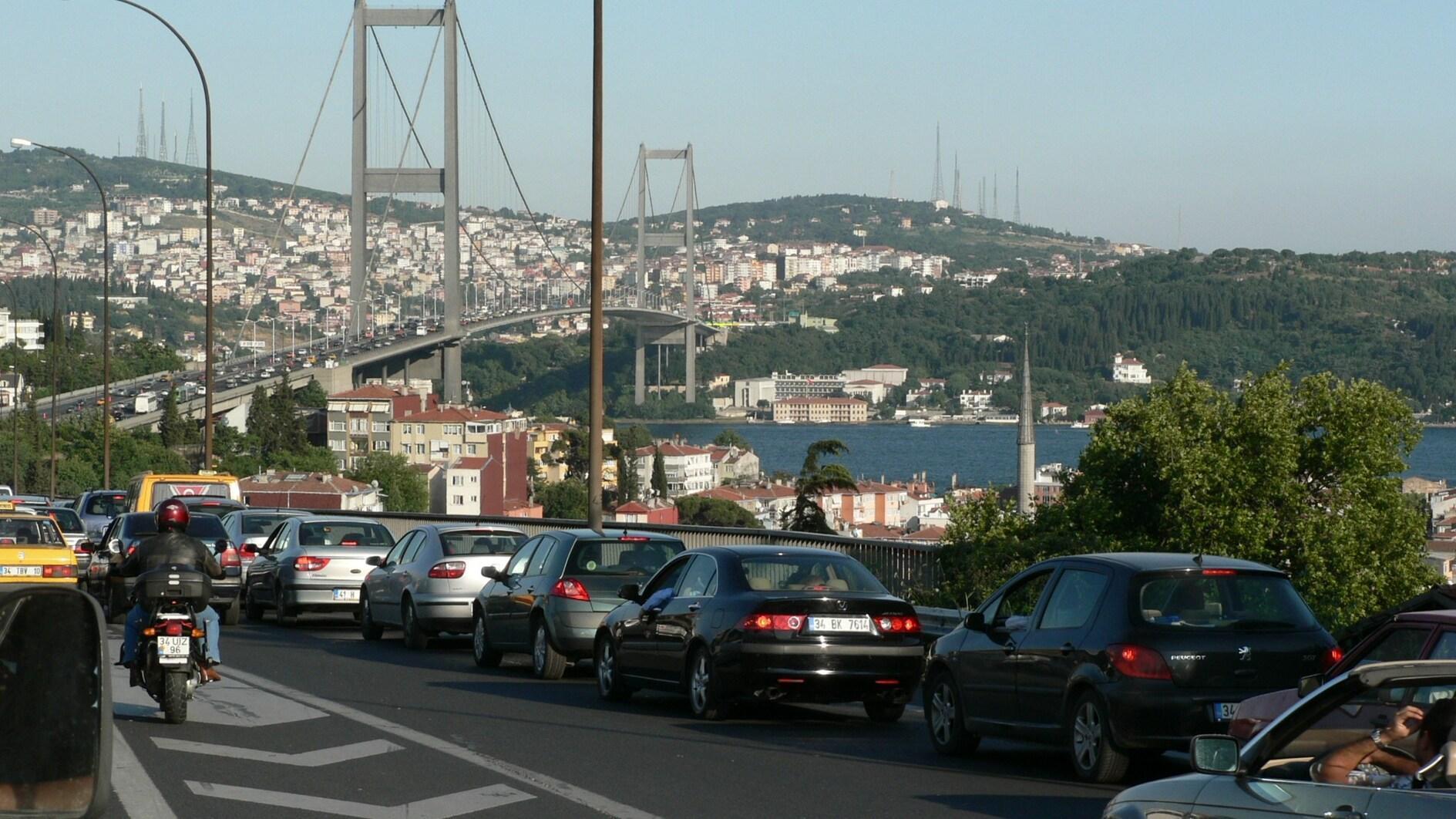
The Transport and Infrastructure Ministry is currently evaluating a concept that would allow pedestrians to use the landmark the July 15 Martyrs' Bridge over Istanbul’s Bosphorus with existing pathways that have been closed following security issues.
Although still in its conceptual phase and yet to progress into a formal project, the initiative is being framed as a "touristic venture" that would be strictly regulated and limited, according to information provided by ministry officials to daily Hürriyet.
Completed over a span of three years and inaugurated in 1973, the bridge was the first of the three major crossings connecting the two continents, originally christened the Bosphorus Bridge. However, following the construction of the Fatih Sultan Mehmet Bridge further north, it became colloquially known as the “First Bridge.” In 2016, after the failed coup attempt by the FETÖ terror organization that saw numerous lives lost on the bridge, it was renamed the July 15 Martyrs' Bridge' in their memory.
When first opened 51 years ago, the bridge featured pedestrian access, with two designated walkways. However, due to safety concerns and an uptick in suicides, pedestrian access was eventually prohibited, leaving the bridge to serve vehicular traffic exclusively.
The ministry, drawing inspiration from pedestrian-friendly examples like the Golden Gate and Brooklyn Bridges in the United States, may develop a similar project, though Minister Abdulkadir Uraloğlu emphasized the importance of consulting public opinion from Istanbul residents.
Various professionals interviewed by daily Hürriyet expressed a belief that reintroducing pedestrian access could be beneficial from a tourism perspective, while also acknowledging the potential technical and security risks.
Architect and writer Sinan Genim, who frequently used the pedestrian path in his youth, remarked that this move could introduce a new recreational space for the Bosphorus.
Özgür Özaltun, the head of the Istanbul Guides Chamber, highlighted the stunning vistas from the bridge's southern side, which overlooks historical landmarks such as the Topkapı Palace and Dolmabahçe Palace, remarking that the bridge offers some of the most panoramic views of Istanbul’s rich heritage. He further noted that his organization would not oppose the idea, provided that security concerns are adequately addressed.
Art historian Hayri Fehmi Yılmaz said that the bridge could serve as a remarkable viewing platform and offer extraordinary perspectives on the city.
"It would forge a new touristic route and foster a greater sense of belonging and identity among the city's inhabitants," Yılmaz said.
On the other hand, retired police chief Haydar Özdemir raised concerns about the inherent security risks. He noted that the existing pedestrian path is quite narrow, making it vulnerable to congestion and blockages in the event of an emergency.
“If someone leaves a bag behind, it would be treated as a ‘suspicious package,’ potentially halting both pedestrian and vehicular traffic. There’s also the possibility of pedestrians attempting to cross into vehicle lanes, along with other unforeseen risks,” Özdemir warned.
Bridge expert Professor Dr. Metin Aydoğan added that the area is subject to strong winds, and any additional structures to shield pedestrians could increase the load on the suspension cables, potentially causing more significant problems.
Professor Dr. Altok Kurşun, who was involved in the construction of the bridge more than 50 years ago, argued that the pedestrian pathways were included in the original design calculations, meaning the structure's capacity can accommodate pedestrians without issue.
However, he cautioned that specific measures would be necessary to mitigate unforeseeable risks, noting that additional weight could necessitate systemic modifications.
Kurşun suggested that the bridge could be opened to small, guided groups of 10-20 people in a controlled, museum-like setting.
"But a broad and unrestricted pedestrian flow would neither be prudent nor beneficial."